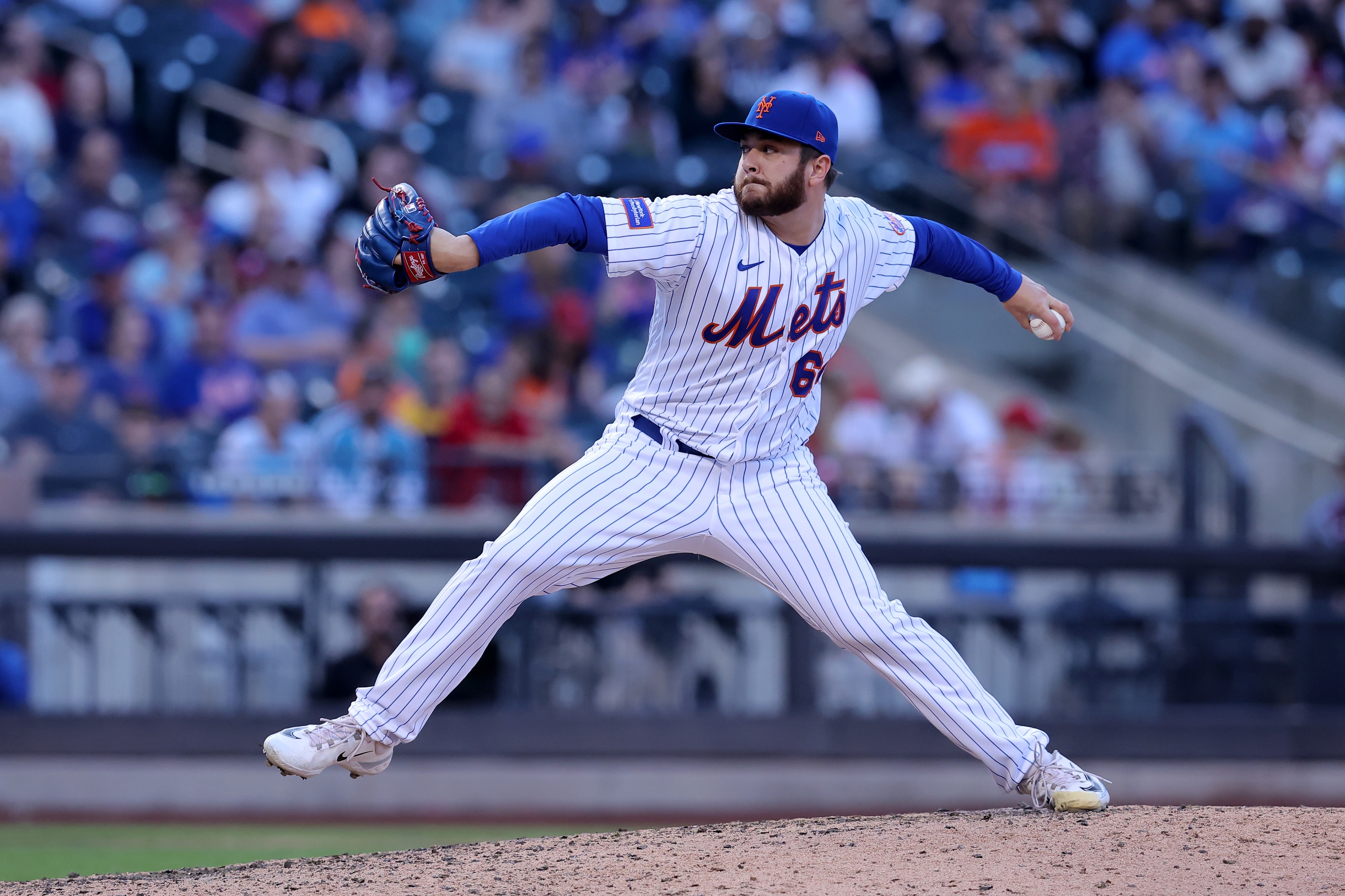We're entering the seventh year since the White Sox failed to sign either Manny Machado or Bryce Harper. The two executives responsible for leading the pursuit have been fired, and the chairman who hamstrung their efforts has created a plan to transition the controlling interest to an entirely unrelated person. While Harper and Machado remain productive big leaguers for competitive MLB enterprises, there isn't anything to say about them that hasn't been said before.
However, we've spent comparatively little to no time discussing the White Sox's utter indifference to George Springer, and after watching him hit the go-ahead three-run homer in Game 7 of the ALCS to propel the Blue Jays to the World Series on Tuesday, you could argue that the insufficient interest there was more damning of their thought process and priorities.
Springer's free agency after the 2020 season represented the last of the market's attempts to meet the White Sox halfway. The Sox didn't want to pay $300 million over 10 years for Machado, or 13 years and $330 million for Harper, even though those figures represented discounted markets due to the noted absences of the biggest players. It might've been unreasonable to expect the White Sox to dwarf their previous record free-agent by nearly fivefold, but Rick Hahn and Kenny Williams sure made a big deal of trying, at least with Machado.
When Springer hit free agency after the 2020 season, he was only expected to cost half of those commitments. There were reasons for it: At 31, he was on the older side for a first-time free agent, he didn't have the strongest health history, he didn't figure to play center for the life of whatever deal he signed, and his right-handedness made it harder to plan for a role player transition if decline ate away at his game in a typical fashion. Perhaps there was also some fallout from the Astros scandal, which had broken the winter before, but hadn't approached closure.
But if the White Sox weren't willing to pay top(ish) dollar for peak free agents, then Springer's case represented the next-best opportunity to meaningfully patch the open wound in right field. He was athletic enough to cover center, hit for power with plate discipline, and, even if you don't believe its predictive value, performed in October. That's nearly everything the White Sox immediately needed in 2021, a year they were expected to reach the postseason.
Instead, the winter opened with Jeff Passan pouring cold water on the very notion of the White Sox getting involved, and the story never changed. Indeed, the Sox privately affirmed they never planned to shop at the top of the corner outfield market, and opted to sign the priciest closer available instead, then used their victory lap to lecture about real player value. Hahn celebrated Reinsdorf's willingness to spend top-of-a-lesser-market money by guaranteeing Liam Hendriks $54 million over three years. At the same time, he and Reinsdorf both patted themselves on the back for the creativity of turning the fourth-year option into a $1.5 million annuity spread out over 10 years, because in Reinsdorf's words, "There was no way I was going to commit to a regular four-year contract." Even when they were signing a supposedly crowning piece to a roster with grand ambitions, they signaled to fans that Hendriks wasn't actually that good.
But getting back to Springer, his free agency could have unfolded differently if the White Sox wanted an outfielder, as his contract talks very much played out like he wanted a non-Canadian team involved, given the uncertainties about where the Blue Jays might play while international COVID restrictions were in place. He didn't sign his six-year, $150 million deal with Toronto until late January, as the Mets reportedly held firm at five years, and no other team matched even that level of intensity.
Here's where we acknowedge that it's fair to question whether Springer would have meaningfully affected the White Sox's team trajectory, because oblique and quad strains limited him to 78 games in his first season with Toronto, which was followed by a gradual decline that would've mirrored the White Sox's fortunes. It's neatly summed up by his bWAR column (*which starts with his last season in Houston, extrapolated to a 162-game schedule):
- 2020: 5.9*
- 2021: 2.3
- 2022: 4.2
- 2023: 2.0
- 2024: 1.1
2025 has been a different story, as he used an offseason workshop with Michael Brantley to launch a renaissance campaign. He hit .309/.399/.560 over 140 regular-season games, and with a team as successful as the Blue Jays, it set him up for a signature moment in Toronto baseball history that's only surpassed by Joe Carter. A similar rebound with the Sox, assuming everything else deteriorated on schedule, would've only set him up to get traded.
Perhaps he stays healthier with the White Sox, who avoid the drastic, dramatic collapse of standards. Perhaps he spends even more time on the IL, and everything turns out the same. We'll never know. What can be said is that a commitment to Springer, if it followed a similar shape to Toronto, would've given the White Sox a real right fielder instead of counting on Leury García for two consecutive Octobers. They also would've avoided expending the money, time and energy on an Adam Eaton reunion and an eleventh-hour trade for AJ Pollock that foreshadowed Miguel Vargas' introduction in terms of visually apparent distress from realizing the White Sox and Dodgers have nothing in common besides a spring training facility.
Still, we wouldn't be rehashing this history if the White Sox never revisited the idea of a meaningful investment in a corner outfielder. Because even though they went 0-for-4 in going from Jon Jay to Nomar Mazara to Eaton to Pollock, at least bargain hunting is an ethos.
Except, instead of trying to go 1-for-5 with somebody like Robbie Grossman, they pulled a U-turn and finally did travel down the long-term corner outfielder route when they signed Andrew Benintendi to a five-year, $75 million deal. That deal was half the total cost of Springer's contract, and for good reason, considering Benintendi was coming off a five-homer season that was cut short by a hamate fracture. If he were more impactful and healthier, the White Sox probably wouldn't have ponied up.
Instead, Benintendi's status threw enough flags for his price to fall into a range the White Sox were willing to accept, and they've gotten what they paid for. More precisely, they didn't get what they didn't pay for, and just in time for all of the other supposed pillars to collapse.
Benintendi's been a White Sox for three years, during which the White Sox have lost 101, 121, and 102 games. He's not the primary reason they've been historically terrible, but he also hasn't helped, and he'd be the first one to admit it. He spent the first year dealing with the aftermath of the wrist issue, and then he's spent the last two years selling out for 20-homer power while leg issues have rendered him a defensive liability in left.
When you add in the $44 million he's been paid to the $8 million the White Sox gave Eaton and the $15 million they paid Pollock, you see a team that used its treasured financial flexibility to spend nearly as much money in far less productive ways:
| 2021-25 | PA | BA | OBP | SLG | bWAR | Cost |
|---|---|---|---|---|---|---|
| Springer | 2808 | .263 | .343 | .461 | 14.4 | $127.5M |
| White Sox | 2359 | .241 | .304 | .386 | 1.2 | $67M |
It seems like there are two lessons to take away from this, and Chris Getz has absorbed one of them. He's gone in the other direction with attempting to solve right field, trading for Dominic Fletcher and Zach DeLoach in his first winter (which didn't work), and then signing Mike Tauchman and Austin Slater in the second (which did, more or less). It takes a lot of evaluation talent and luck to produce low-cost solutions on a consistent basis, but it's easier to pivot from than going halfway and treating it like all-in, especially when the Sox have so many other problems to solve. For instance, he's also extended this attitude toward first base, and he isn't yet wrong to do so.
The other lesson is when teams extend themselves to sign excellent players, a margin for error is included in the cost. Players like Springer -- Marcus Semien, to name another -- can disappoint yet still be productive and contribute, and sometimes they bounce all the way back. Meanwhile, when the White Sox can only summon the financial courage to pony up for an adequate player, any drop risks heading off a cliff.
It doesn't seem like we'll see the White Sox's comprehension of this lesson validated anytime soon. Getz is touting hopes of internal improvement over external additions, and recent offseasons have seen Springer-grade players go from holding out for the best possible deals to blasting past their crowd-sourced expectations. The White Sox missed their most favorable window for spending big, and it'll probably take a new CBA and a new CEO for them to regain a seat at that table.






